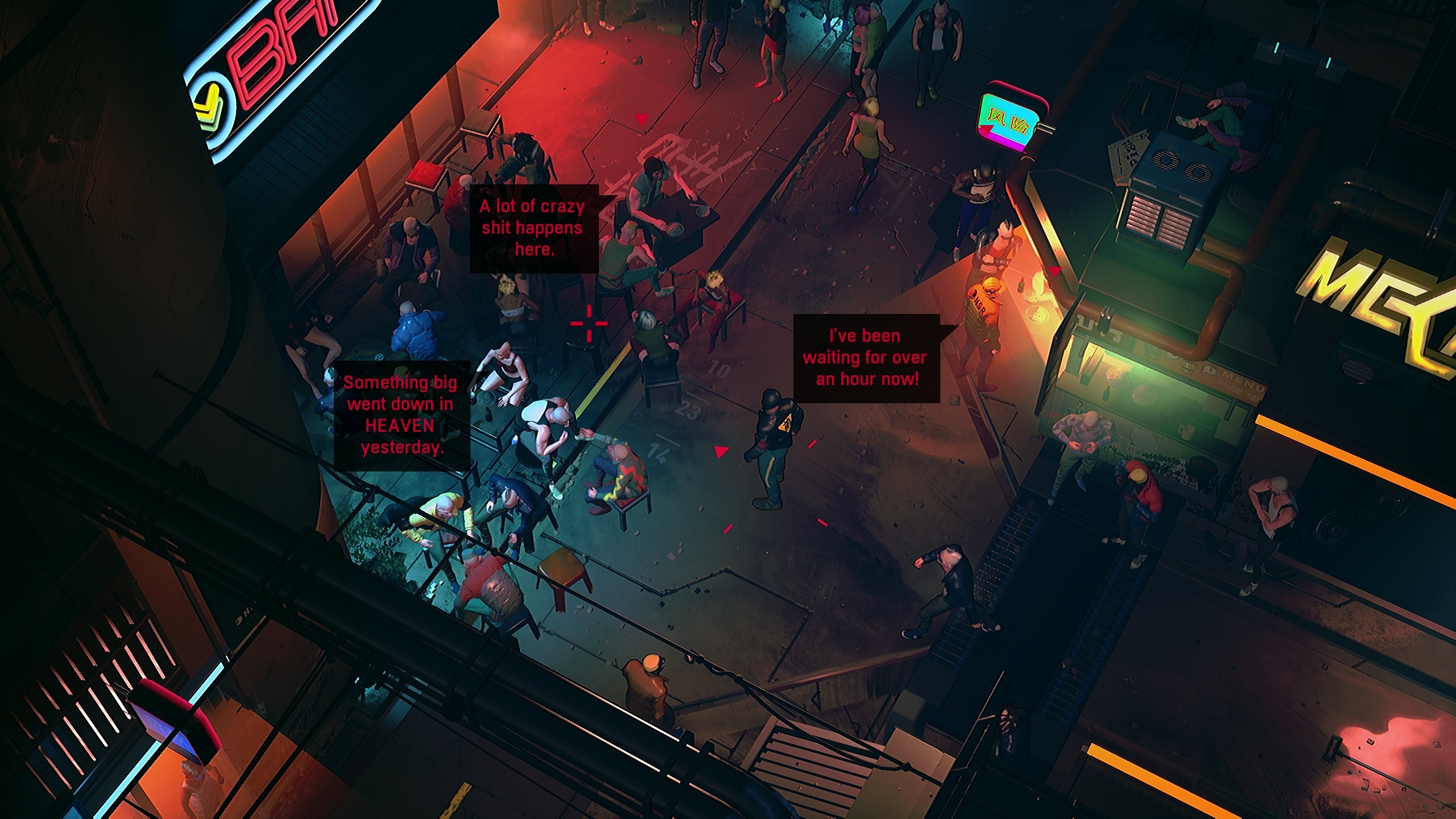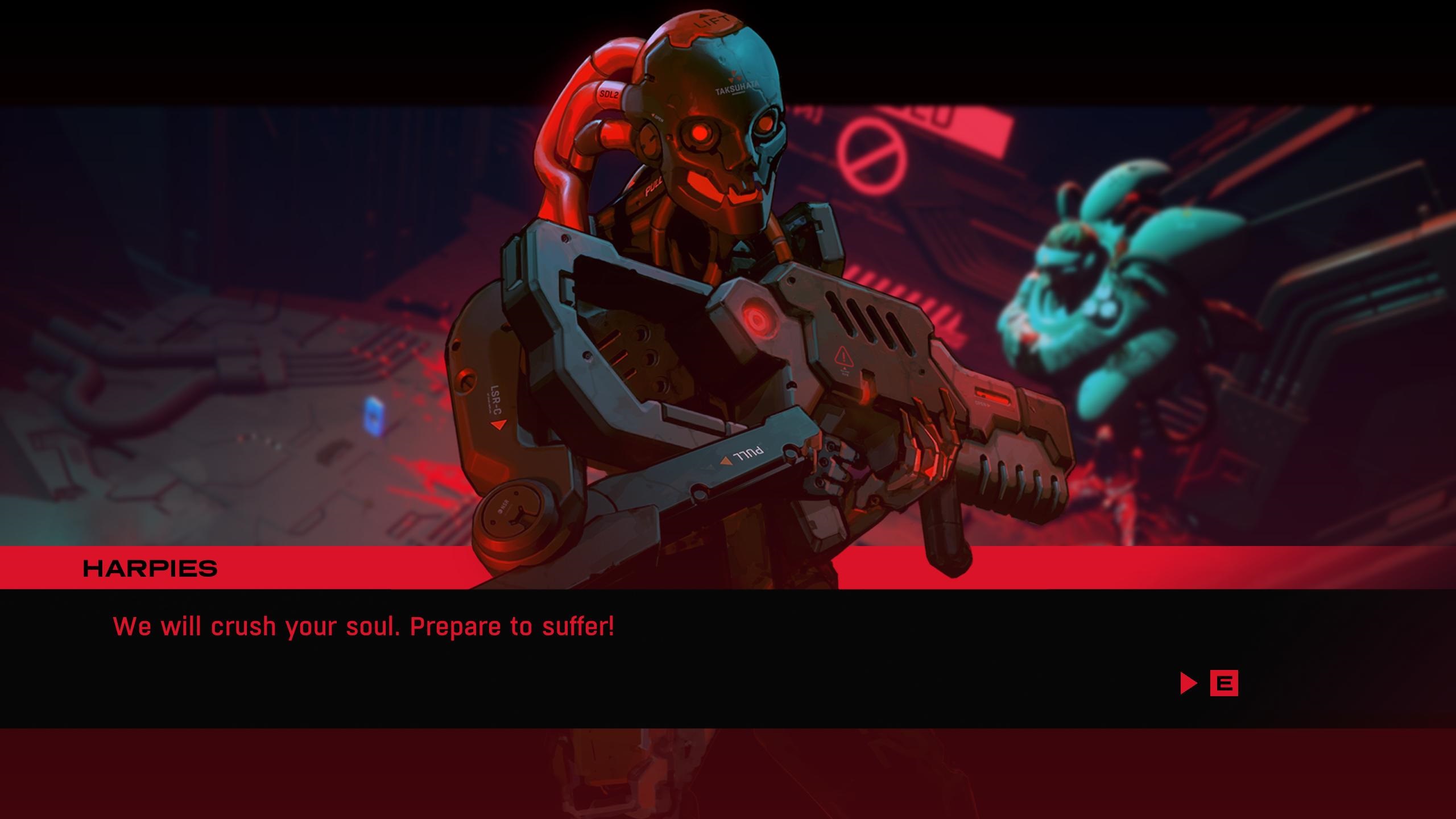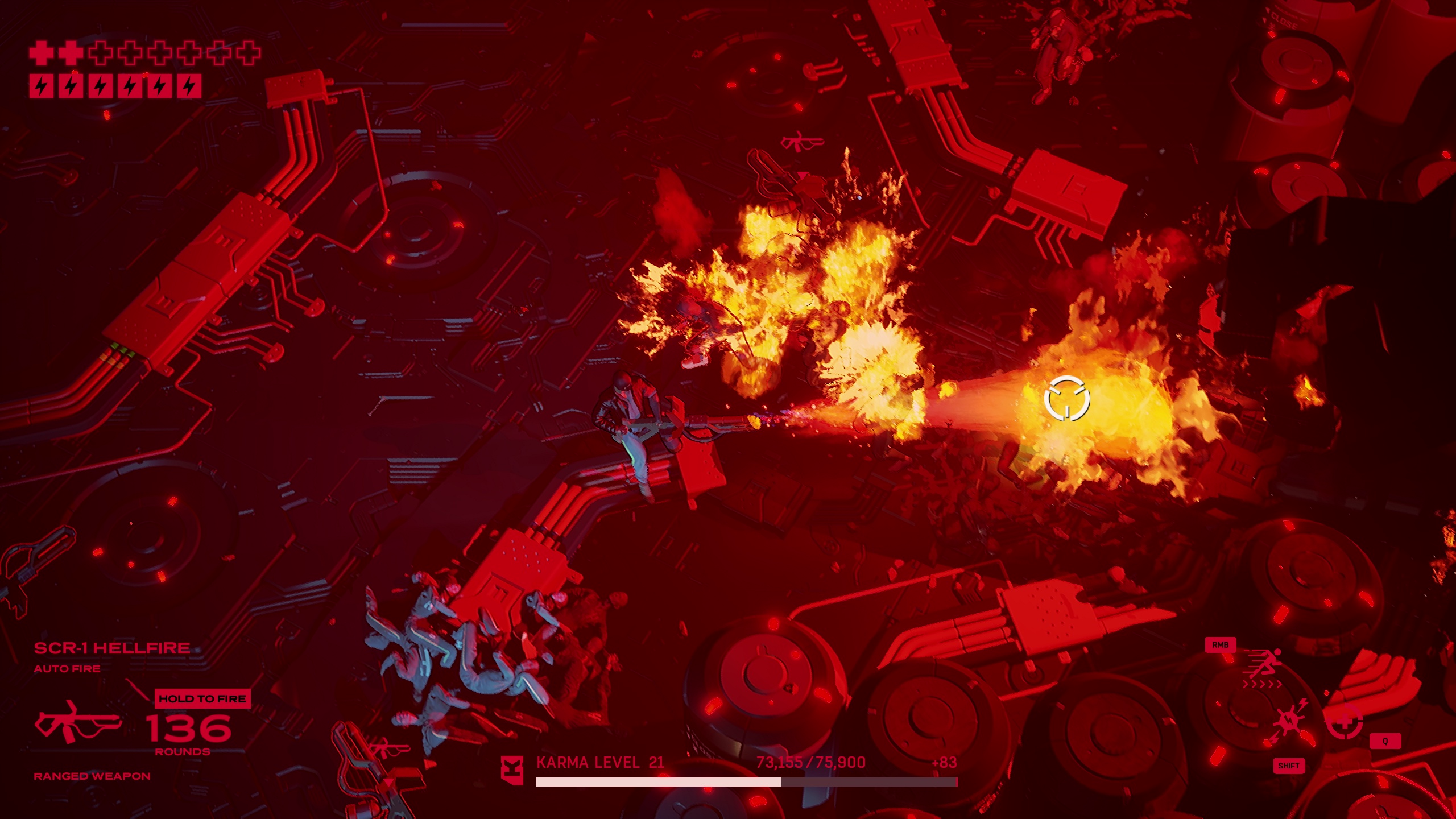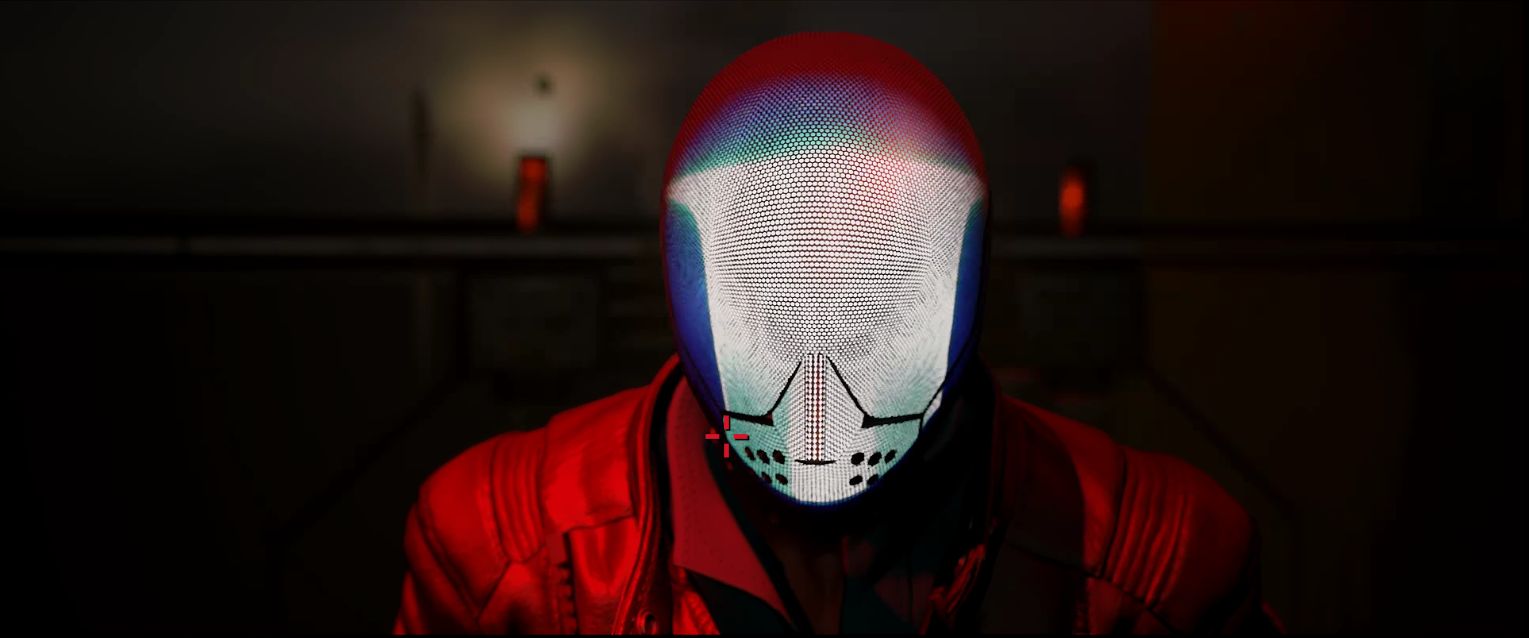Our Verdict
Dazzling, dangerous, and dripping in style, Ruiner is a superb, if short, whirlwind of cyber-violence and sightseeing.
PC Gamer's got your back
What is it? A top-down action shooter set in and around a stylized science fiction city.
Reviewed on: Windows 10, Core i7-7700K, 32GB RAM, GeForce GTX 1080Ti
Price: $20/£15
Release date: Out now
Publisher: Devolver Digital
Developer: Reikon Games
Multiplayer: None
Link: Official site
Buy it: GOG, Steam
Read our affiliate policy.
Ruiner is gorgeous, a sensory feast inspired by the works of cyberpunk's 1980s heyday, in which a silent, masked protagonist travels through the nightscapes and industrial jungles of a grit-tech 2091. Underneath, a thumping top-down action game delivers sword-sharp combat, the familiarity of its design offset by the constant urge to simply stand still and drink everything in.
I’m still reeling from the brutal strength of Ruiner’s aesthetic. It's shoved into my face the moment I click New Game: huge, bold letters slammed across my monitor in bright red, Chinese characters and warning stripes scattered upon cable-choked walkways, strobing bursts of light whenever my objective updates, and enough chromatic aberration to make Far Cry 3: Blood Dragon look like a pleasant still life. I never got the migraine I dreaded, but I wouldn't have Ruiner as a nightcap to relax with before bed.
Ruiner's color palette reaches deep into the cyberpunk spectrum of neon-hued primaries and oversaturated artificiality. Enemies and friendlies alike wear crude 1980s futurism fashion, mohawked urchins in dirty tank tops leering at buzzcut enforcers with rectangular sunglasses and stony expressions straight out of a Katsuhiro Otomo manga. It's a look firmly anchored in cyberpunk anime and film, giving combat areas a claustrophobic overabundance of machinery and electronic clutter. But like most works in the genre it's the city that plays the most crucial role in establishing the tone. For Ruiner, that's Rengkok.

Rengkok is where I made the strongest connection with Ruiner. It isn't a sprawling hub or a multi-district warren, but I wandered its streets with wonder all the same. Its narrow alleys and graffiti-stained walls impart the feeling of a rock-bottom slum rotting beneath the shadows of mega-city skyscrapers, though I was disappointed by its meager scale—a few open blocks and couple of rooftops.
What I did explore delighted me with exquisite details and ambiance thanks in part to the soft chimes and ethereal chanting of Island Door by Susumu Hirasawa, another nod to an anime influence. Whenever I left the city for my next mission I yearned to see more of it, only to return to streets and buildings that changed little over the course of the story.
Rengkok's denizens are a welcome helping of personality in contrast with the main character's silence, which lightly grated on me as I struggled to find a motivation behind my actions beyond a thin 'brother in distress' pretext. After the umpteenth dialogue prompt of "nod" or "shrug" I abandoned hope of finding depth in a man wearing a weird mask.
When I wanted to experience humanity through the looking glass I talked to people in Rengkok. They portray that oft-forgotten chunk of cyberpunk that deals with the downtrodden in a future where technology is deified, reviled, and terribly powerful. An old woman warned me about the oncoming danger of sentient satellites. A girl wearing a cat-ear beanie press-ganged me into waging a hacking war against holographic street cats which were actually corporate surveillance devices. A barely-clothed nun offered to trade pain—dying over and over during missions, in gaming terms—for Karma, Ruiner's currency for leveling up and unlocking new abilities.

Bullets, blades, beauty
The Creeps, the first group of enemies I was sent to kill, best embody how Ruiner masterfully contextualizes its punishing difficulty with the story of its world. Driven to desperate survival, the Creeps have gorged on implants and cybernetics to speed up their movements and tighten their aim. Descending into their home, an underground parking garage complex, feels like entering the halls of a forgotten kingdom. Their leader, a spiky-haired kid named Nerve, cast aside his mercenary nature to challenge me to an honorable sword fight. This was some of the 'punk' I was looking for.
When it's time to fight, combat is swift and fluid, a dance of dodges, blitzy assaults, flitting retreats, and twitchy aim. The mouse controls where you aim and WASD is locked into moving you up, down, left, and right no matter which direction your pistol/pipe/ninja sword is pointing, making precision possible even while sidestepping away from attacks that can drop you fast if a few of them hit.
It all hinges on the Dash ability, careful right-click taps to surge a short distance in the current direction. Playing on Hard—Reikon’s recommended difficulty—is a torturous spectacle of embarrassingly long death chains, but I never felt my frustration defeat my desire to improve and push further on the next life.
Helping that 'just one more go' feeling is the bevy of gun and melee weapons dropped by enemies and peppered throughout a level. There’s an impressive degree of difference—classic ballistic rifles, exploding disc launchers, flamethrowers, chainguns, particle beam cannons, and many more—but I frequently opted for the close-range combo of shotgun and blade.
Ruiner's allure kicks into overdrive in the thick of a fight, splashing out dense clouds of particle effects, smooth animations, chunky gibs, fiery orange explosions, and deep shadows. When I charged squads of gunmen with a crackling chrome sword in my hands, I was Hiro Protagonist from Snow Crash.
Disconnect
I wish I could lavish similar praise on Ruiner's remaining enemy types, but after conquering the Creeps I didn’t encounter much variation beyond melee foes beelining at me and gun-toting minions running in roughly circular patterns. It would've been nice to tangle with some more unpredictable enemies. Some boss fights similarly fell prey to repetition, and the methods of defeating them aren't especially intricate.
So too with many map layouts, a corridor-killroom-corridor pattern that starts feeling stale by the game's second act. There are exceptions, of course: the Creeps' garage is wonderfully maze-like, and a later level has a great theme of descent into an underworld of the damned.
I was eager to take advantage of my character's flexible ability loadout system, which uses swappable points to enable or disable passive bonuses and active skills on the fly. Yet some of the choices, such as a supply drop or a deployable shield wall, are mostly useless in comparison to the overriding importance of Dash due to the breakneck speed of Ruiner's combat.

The shock launcher's flashbang effect is conversely pretty overpowered—I could stunlock groups and even boss enemies at little power cost and easily eliminate them. Still, the freedom of choice in determining a loadout is nice, and I look forward to watching the inevitable 'no ability' speedruns. On the performance side I didn’t experience any hitches or slowdowns while walking around Rengkok or blowing up everything in sight, another plus.
I finished Ruiner in a little over six hours. The ending came suddenly, an abrupt fadeout to credits after traveling through 15 areas and a final encounter that was little more than a ceremonial arena showdown. I'm concerned by the one-and-done nature of Ruiner at release, especially with the promising backdrop of Rengkok and its underbelly. Reikon plans additional game modes through DLC updates, but I wonder whether they'll elaborate on or explore the city. For now, it's time to get lost in the biomass for as long as you can.
Dazzling, dangerous, and dripping in style, Ruiner is a superb, if short, whirlwind of cyber-violence and sightseeing.
Omri Petitte is a former PC Gamer associate editor and long-time freelance writer covering news and reviews. If you spot his name, it probably means you're reading about some kind of first-person shooter. Why yes, he would like to talk to you about Battlefield. Do you have a few days?



